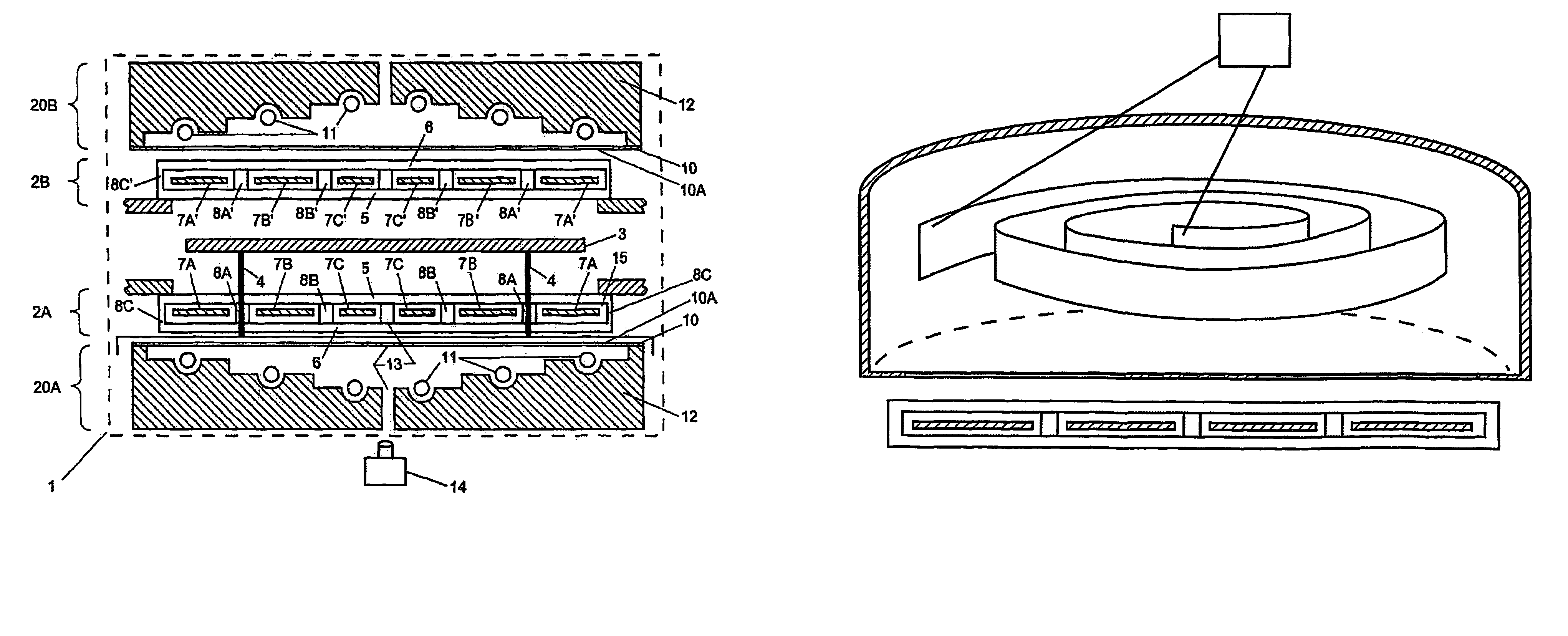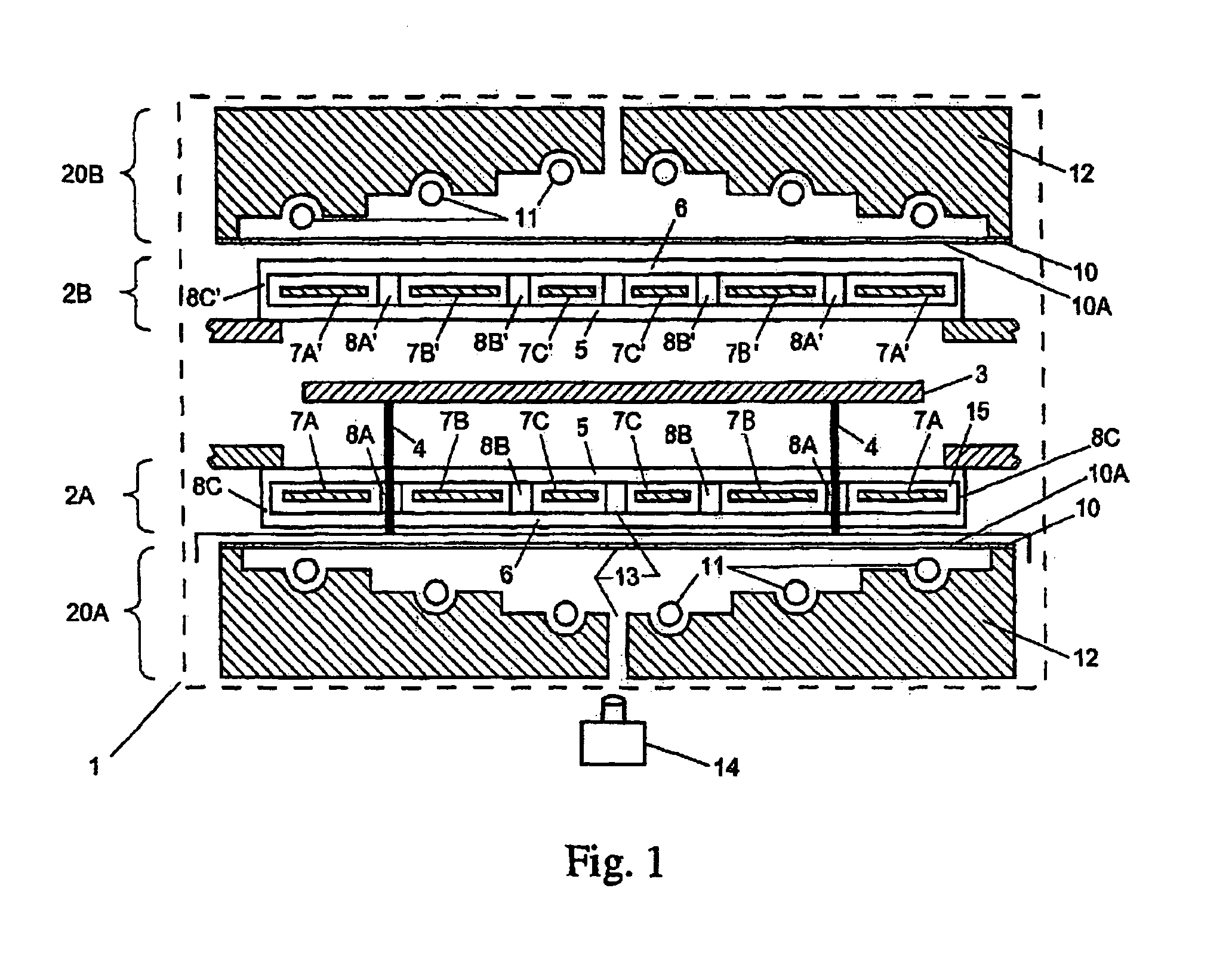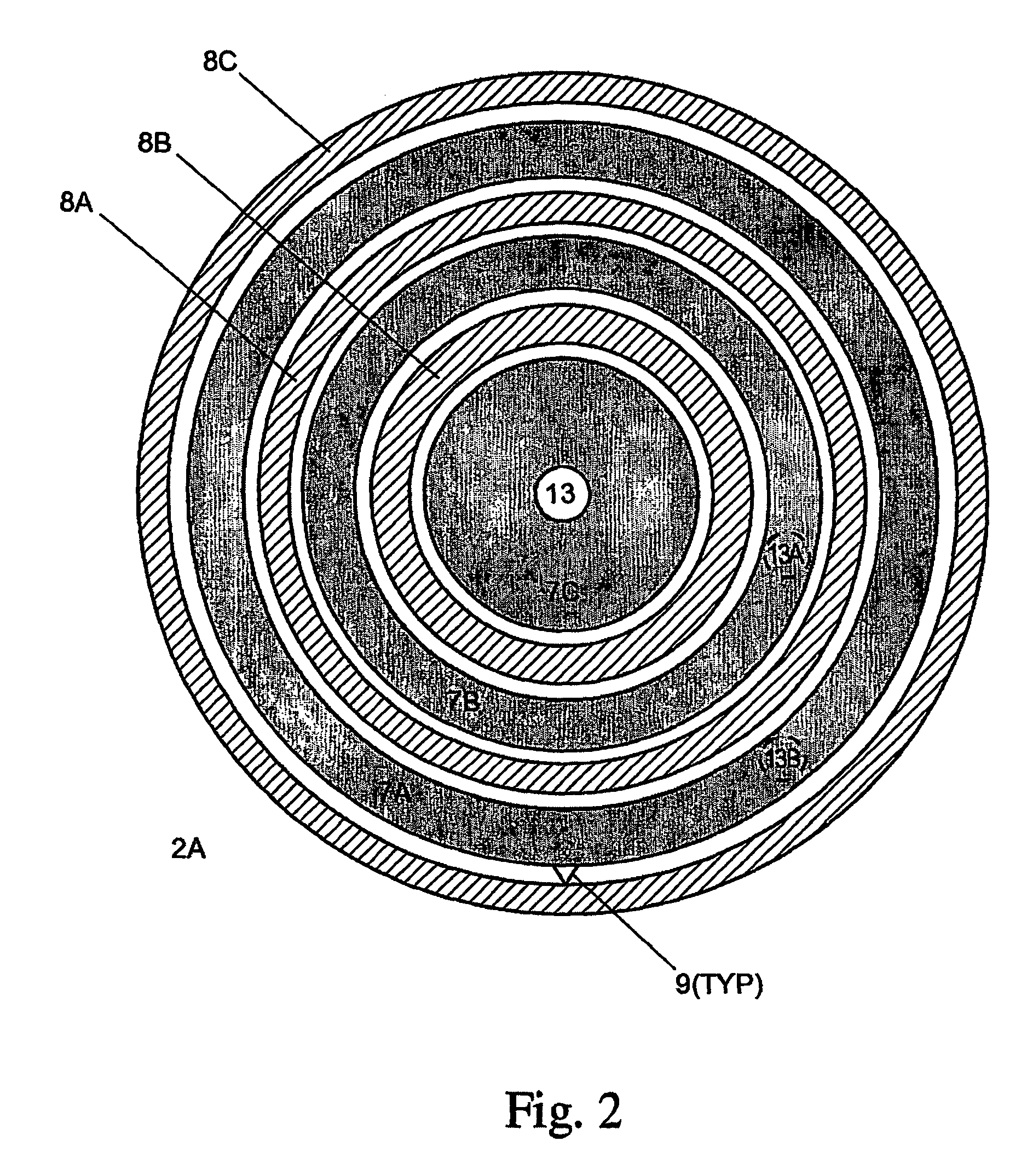Rapid thermal processing lamp and method for manufacturing the same
a technology of thermal processing lamp and substrate, which is applied in the direction of muffler furnace, furnace, instrument, etc., can solve the problems of under-heating, uncontrollable characteristics of the layer, and the life of known rtp heaters, and achieve the effect of fast processing
- Summary
- Abstract
- Description
- Claims
- Application Information
AI Technical Summary
Benefits of technology
Problems solved by technology
Method used
Image
Examples
first embodiment
[0021]Referring now to the drawings, wherein like reference numerals designate identical or corresponding parts throughout the several views, FIG. 1 illustrates the present invention. The apparatus includes a chamber 1 to which heated lamp assemblies 2a and 2b (e.g., RF induction heated lamp assemblies) are fitted. A substrate 3 (e.g., a silicon wafer or LCD panel) to be heat-treated is located substantially midway between the two lamp assemblies (2a and 2b) on pins 4 (e.g., quartz pins). (As would be apparent to one skilled in the art, the present invention may selectively and alternately illuminate (1) the top side, (2) the bottom side or (3) both sides of the substrate 3.) Alternately, a single lamp assembly can be used. The lamp assemblies 2a and 2b include a first isolation plate 5, a second isolation plate 6, and at least one of (1) filament rings 7a, 7b, 7c, 7a′, 7b′ and 7c′, (2) a ring of filament coils, (3) a wavy filament structure, or (4) a ring made of weaving wires. The...
second embodiment
[0023]A shield 10 (e.g., an RF-, a heat- or a combination RF / heat-shield) is fitted between the heated lamp assemblies (2a and 2b) and corresponding cooled induction coil assemblies 20a and 20b. The cooled RF induction coils 11 are mounted in a cooled structure 12 (e.g., a water- or air-cooled cup) (preferably made of a conductive material (e.g., OFHC copper, plated with gold)). In one embodiment, the shield 10 is made of a piece of metal plate (e.g., a gold plate) with a radial pattern of slots 10a therein. In a second embodiment, an isolation plate (e.g., a quartz plate) is coated with a metal (e.g., gold-plated on the side towards the lamp) and formed with a radial pattern of slots; hence comprising the shield 10. The (radially) slotted shield 10 serves two primary functions, namely, (1) the radial pattern of slots in the shield 10 will permit the RF field to penetrate so that it will inductively couple power with the tungsten rings 7, while (2) the RF / heat shield 10 will keep ex...
PUM
 Login to View More
Login to View More Abstract
Description
Claims
Application Information
 Login to View More
Login to View More - R&D
- Intellectual Property
- Life Sciences
- Materials
- Tech Scout
- Unparalleled Data Quality
- Higher Quality Content
- 60% Fewer Hallucinations
Browse by: Latest US Patents, China's latest patents, Technical Efficacy Thesaurus, Application Domain, Technology Topic, Popular Technical Reports.
© 2025 PatSnap. All rights reserved.Legal|Privacy policy|Modern Slavery Act Transparency Statement|Sitemap|About US| Contact US: help@patsnap.com



